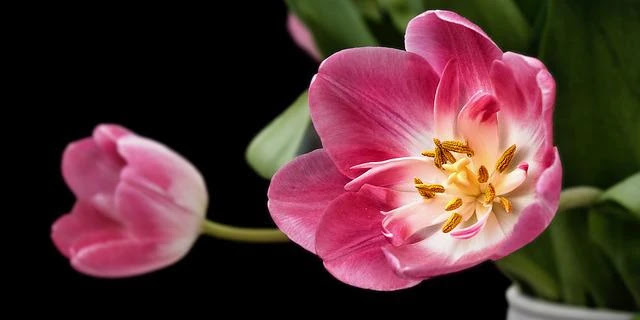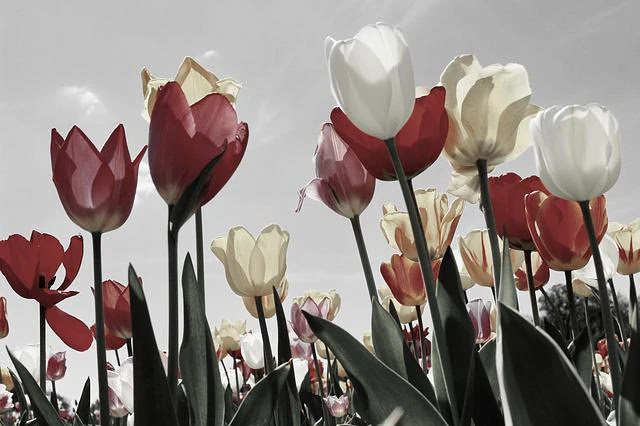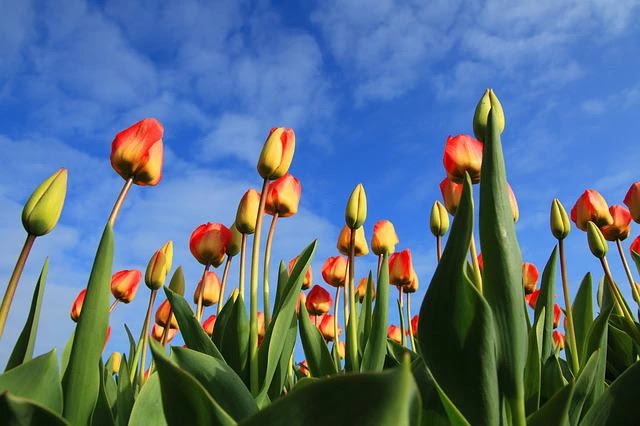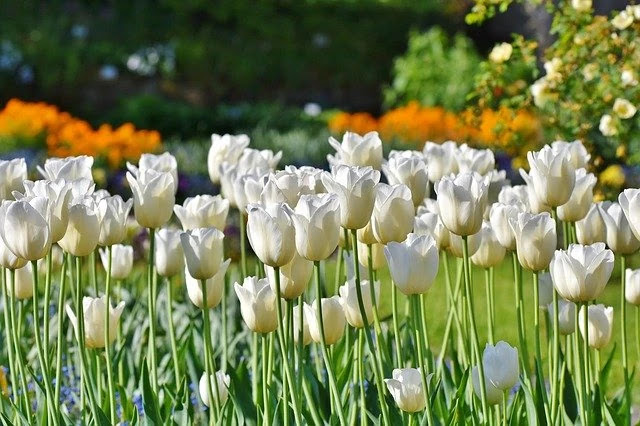Fact Of The Post
There are more than 3,000 different varieties of tulip!
Tulip is part of the Lilly family, these interesting little flowers symbolize Spring and the coming summer – but also hold many different meanings for their different colors.
Although wholly synonymous with the Netherlands, they are not native to Eastern Europe – having been first imported from the Middle East and cultivated by Flemish botanist Carolus Clusius at the Dutch Leiden University’s botanical gardens.
Do you know that they are the National Flower of Turkey and Afghanistan and tulips helped save the Netherlands from starving in WWII?
Here, we share the top 5 Fun Facts About Tulips that might you not know about it.
Nice Facts About Tulips
💪💪💪Let's Start Reading These Facts😤😤😤
1. There are more than 3,000 different varieties of tulip!
This is something that won’t come as a surprise to anyone who has ever taken a walk down Amsterdam’s famous floating flower market!
With 75 wild tulip species and over 150 different species altogether, it’s not surprising that there are so many different variations.
There are even tulips that bloom with up to four different flower heads atop just one stem!
Some of the most striking tulips are those with streaks of different colors in their petals.
These tulips were originally cultivated by Flemish botanist Carolus Clusius, the father of the Dutch obsession with tulips, in the Netherlands in the 1600s.
He noticed that some of the tulips he was cultivating had a viral infection, which he called “broken tulips”, that caused the petals to show beautiful and striking streaks of color in them.
After noticing this, Clusius was able to carefully spread this infection among his tulips to create many new color variations.
2. Tulips are edible.
Well, the petals can be readily eaten and the bulbs can be eaten if prepared correctly.
This was something the Dutch learned during the Hunger Winter famine of 1944.
After a strike by Dutch rail workers, the Nazis stopped all imported food from entering the Netherlands, causing a winter-long famine that was directly responsible for the deaths of 22,000 Dutch people and indirectly responsible for countless deaths on top of that.
Due to a lack of manpower earlier that year, most of the Netherlands’s tulip bulbs hadn’t been planted, so the Dutch government’s Office of Food Supply published a guide on how to properly prepare the bulbs as well as suggested recipes for them.
There was one recipe for bread made from crushed up tulip bulb, flour, salt, and water, which one child described as tasting like sawdust – but even that was better than nothing!
The famine ended in 1945 when Sweden exported large amounts of flour and other goods to the Netherlands and the Nazis allowed them into the country.
Once again, the tulip had played a significant role in Dutch history.
3. Tulips are not from the Netherlands.
Despite being the National Flower of the Netherlands, the tulip is not native to the Netherlands.
The tulip bloomed natively in a big swathe of land that covered Southern Europe to Central Asia but was introduced into eastern Europe in the form of imports from what is now known as Turkey.
The tulip became a coveted prize within the Netherlands, as it was far more vibrant and lush in color than the flowers native to this part of the world.
Tulips became a status symbol to the Dutch and contributed to one of the world’s first financial-economic bubbles known as “Tulipmania” where they were so valuable, that they could be used to buy a house!
To this day, the Netherlands is still the world’s foremost producer of tulips, producing 3 billion bulbs yearly, most of which are exported worldwide.
4. The different colors of tulips hold different meanings.
This might seem a bit obvious, but with over 3,000 different variations then that must mean there are a lot of different meanings for all those different tulips, right?
Red tulips represent true love – symbolizing passion and romance, and typically these would make a gift for a romantic partner.
Yellow tulips represent hope and cheerful thoughts and typically would be something you’d give somebody as a caring get-well gift.
White tulips are used as a flower to make an apology.
Purple tulips symbolize that somebody is your everything – your sweeten. Purple has long been a color associated with royalty, so by giving your love some purple tulips you’re saying that, to you, they are royalty.
5. The word “tulip” is derived from the word “turban.”
In the Middle East, the tulip was referred to as a “dual-band.” the Persian word for “turban,” because of the way the flower’s head sat atop its stalk, resembling a turban upon a person’s head.
However, this might be a falsehood, as during this time it was fashionable to wear tulips in one’s turban – so nobody really knows whether this is why they are named after turbans or if it is because of their shape!
“Dulband” in Persian became “Tülbent” in Turkish, which in turn evolved to “Tulipán” in Danish – all of which meant “turban” – to later becoming “Tulipe” in French, which just meant “Tulip.”
And that’s where the word “tulip” comes from!
Trivia Questions And Answers About Tulips 😲😲😵
Why is a tulip called tulip?
Because the tulip also seemed very much like the original turban the tulip name was derived from the Persian word 'Tulipan' which means turban. Sultan Suleyman the First gave some tulips to important guests, such as Ogier Ghiselin de Busbecq, the Viennese ambassador to the Ottoman Empire.
How long do tulips live?
Tulips can live anywhere from one to ten years, depending on the species and variety. The closer the tulips are to the wild varieties from Turkey, where the plant originated, the longer they live.
What is the tulip famous for?
Tulips in the Netherlands — present day
The festival celebrates the famous flower and ensures it blooms all over the city. All throughout the first half of April, more than 850,000 colorful (and rare) tulips can be seen in the gardens of museums, private homes, and other parts of Amsterdam.
Who invented tulips?
The Tulip was actually originally a wild flower growing in Central Asia. It was first cultivated by the Turks as early as 1000AD.
Do tulips sleep at night?
But flowers that close up at night, such as tulips, hibiscus, poppies, and crocuses, aren't sleepy. They're just highly evolved. Plants that tuck themselves in for bedtime exhibit a natural behavior known as nyctinasty.
😁😁😁Thanks For Coming😇😇😇
Sources:





Comments
Post a Comment